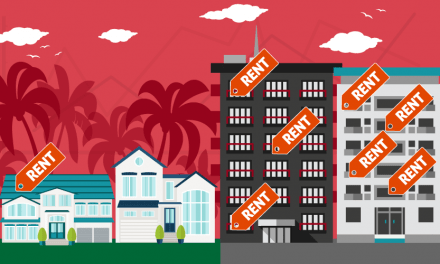This is the eighth episode in our new video series covering Implicit Bias principles, and provides a sneak peek into our new DRE-approved continuing education (CE) requirements that apply to real estate agents and brokers with licenses expiring on or after January 1, 2023.
This episode covers taking the extra steps to help your historically marginalized buyers qualify for a mortgage. The prior episode covers fighting implicit bias in the screening of tenant applicants.
Mortgage lending and the homeownership gap
Bias in mortgage lending is well-documented historically. Though concrete administrative steps have been taken to address it to create a more equitable mortgage market, it still continues in some form today. While the net effect of bias in the mortgage industry and all its manifestations proves difficult to quantify, the fundamental result has been lower homeownership rates and less household wealth for Black and Latinx households.
Here in California, the share of mortgage applicants denied a mortgage are:
- 16% of American Indian mortgage applicants;
- 15% of Black applicants;
- 13% of Latinx applicants;
- 13% of Pacific Islander applicants;
- 10% of white applicants; and
- 10% of Asian applicants, according to the 2020 Home Mortgage Disclosure Act (HMDA).
While the disparity in mortgage denial is clear, it of course is not entirely due to discrimination. The high mortgage denial rates for non-white and non-Asian households can be traced to many observable factors, including:
- down payment size;
- credit history;
- debt-to-income (DTI) ratios; and
- job security.
For example, the average Black mortgage applicant listed a 3.5% down payment, well below the 8.9% down payment from applicants averaged across all races.
While direct discrimination by mortgage lenders is not responsible for low down payment amounts, systemic bias against minority homebuyers is the underlying cause of this disparity. Thinking back, redlining and its ongoing impacts have reduced wealth in Black and Latinx communities, holding back generational wealth and reducing access to benefits like down payment gifts and inheritance.
In fact, parental transfers of wealth like down payment gifts account for 30% of the Black-white homeownership gap, as found in a study by the Consumer Financial Protection Bureau (CFPB). In the U.S., young white households are twice as likely to be homeowners as are young Black households.
The result: the homeownership rate amongst Black households in the U.S. is just 52%, while the homeownership rate for white households is 72%.
A proactive approach to mortgage approval
Real estate brokers and agents are well positioned to open the doors of homeownership for all groups of people, including those who have historically been left out of homeownership. Often times, a proactive approach is needed.
First-time homebuyers may be unsure about the mortgage application and pre-approval process, more so if they are the first in their family to purchase housing. Here, brokers and agents need step up their role as a transaction agent, helping their buyer through every component of the process.
These transactional duties include:
- helping the buyer locate the most advantageous mortgage terms available in the market;
- oversight of the mortgage application submission process; and
- policing the lender’s mortgage packaging process and funding conditions.
Collectively, these activities ensure all documents needed to comply with the lender’s requests and closing instructions are in order. If not, funding cannot take place and closing the sales escrow is jeopardized.
Further, having a couple trustworthy and helpful lenders on hand is crucial. Brokers may suggest these proven lenders to homebuyers to receive a pre-approval letter, which is typically necessary for submitting a successful offer. Homebuyers ought to apply with at least three mortgage lenders so they can choose the best terms.
Editor’s note — Keep in mind that an agent receiving payment for referring a client to a mortgage lender is considered a kickback, which is unlawful under the Real Estate Settlement Procedures Act (RESPA). 12 United States Code §2607(d)
Any first-time homebuyer will be assisted by knowing what documents they will need to have available. Further, even after they receive approval, there are several “next steps” that need to be taken once their offer is accepted. Brokers can move the process along by keeping in contact with both the client and their chosen lender.
Getting an approval – next time
What happens when a potential client wants to buy, but is unable qualify?
Rather than giving up and simply moving on to the next client, it’s important for brokers and agents to take the extra step to help them qualify next time.
For example, brokers can inform unsuccessful mortgage applicants about special mortgage programs designed for first-time homebuyers. Some of these programs allow more leeway in qualifying.
The number one reason for receiving a mortgage denial is a too-high DTI ratio. A homebuyer’s DTI is measured by comparing all of their monthly debt obligations (e.g., auto loan payments, student debt, credit card payments, etc.) with their monthly income. In most underwriting circumstances, a lender will not allow a homebuyer’s total debt — including a mortgage payment — to exceed 43% of their monthly income.
In many cases, the client will be able to gain mortgage approval after taking a few steps to pare down debt. Without being pushy, brokers may continue to check in every month or so to see where they are in the process. Clients may be discouraged or embarrassed about being denied a mortgage, but it’s the broker’s job to keep them motivated and on the path to homeownership — not just in “special cases,” but for all clients.
In the next chapter, we will examine more positives steps agents and brokers can take to ensure they are reaching the broadest range of potential clients, removing barriers for groups that have been historically marginalized and not leaving any group out of the potential for homeownership.
Editor’s note – firsttuesday was one of the first schools in California to obtain DRE-approval for the new implicit bias training and expanded Fair Housing course.
To enroll, visit the order page.


















